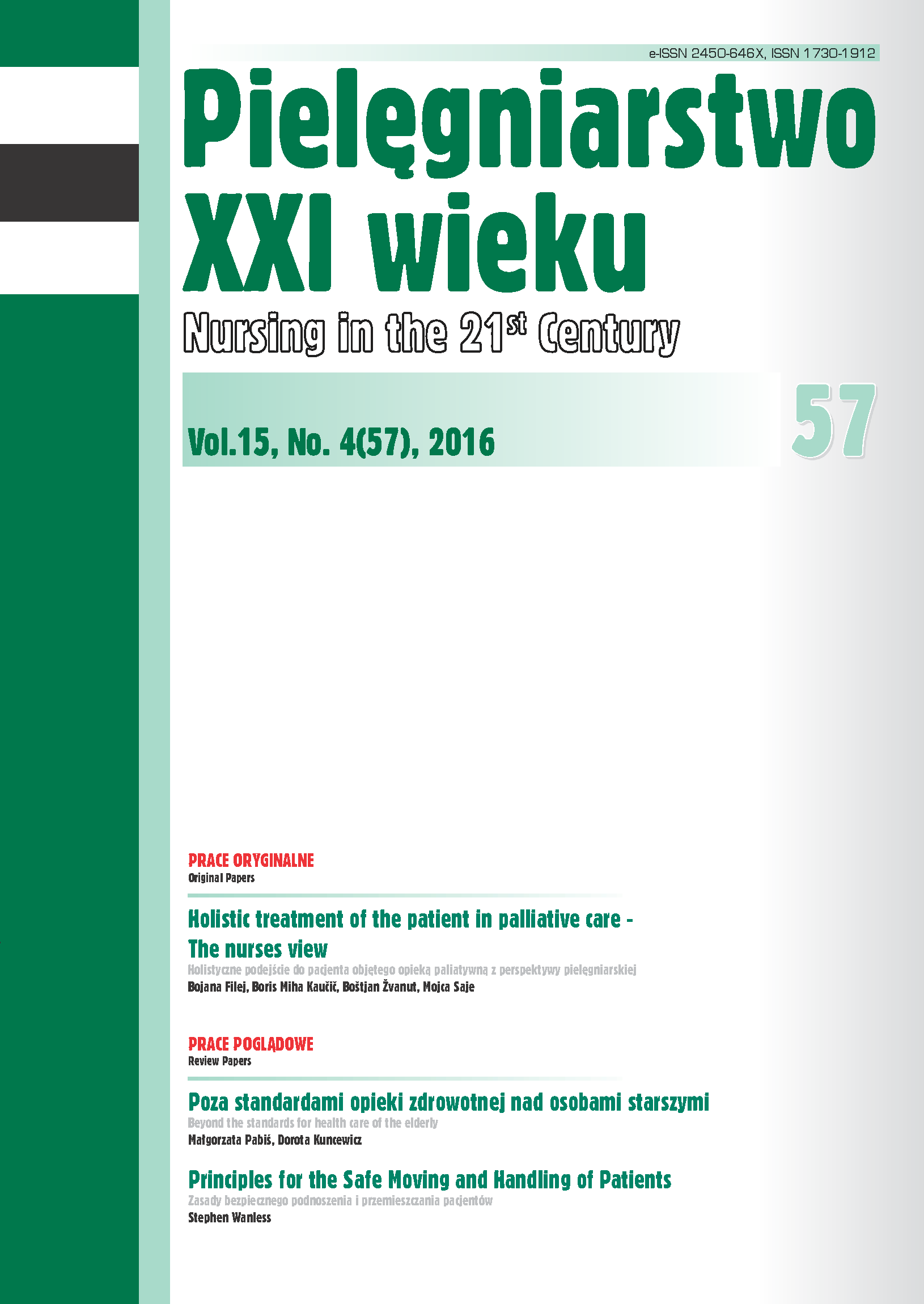Quality of life and sexual activity of women suffering from Polycystic Ovary Syndrome (PCOS)
DOI:
https://doi.org/10.1515/pielxxiw-2016-0035Keywords:
Polycystic Ovary Syndrome, Quality of Life, SexualityAbstract
QUALITY OF LIFE AND SEXUAL ACTIVITY OF WOMEN SUFFERING FROM POLYCYSTIC OVARY SYNDROME (PCOS)
Aim. The aim of this study was to search for a correlation between the quality of life and the sexuality of women with polycystic ovary syndrome (PCOS).
Material and methods. The research was made with the use of the WHOQOL)-BREF questionnaire and the FSQ-28 scale. It included 72 women diagnosed with the (PCOS).
Results. A better quality of life in the areas of psychology, social and background relations turned out to be to a moderate degree connected with the reactivity increase on the particular sexual reaction stages, excluding the sexual arousal domain. “Pain” and “relations with a partner” domains had a negative correlation with the given domains of the quality of life. The statistically significant correlation p<0.05 was observed between the overall quality of life and the following domains of the sexual response cycle: desire, lubrication, arousal, orgasm, foreplay and the relations with a partner.
Conclusions. 1. All domains of the quality of life of women with PCOS are significantly connected with the majority of domains of the sexual response cycle. 2. The domains of the sexual response cycle are significantly differentiated by the sense of the quality of life. The perception of health in that respect is irrelevant.
References
1. Wanyura H. Urazy szkieletu czaszkotwarzowego. Kryst L. (red.). Chirurgia Szczękowo-twarzowa. Warszawa: PZWL; 2007.
2. Wołowicka L, Dyk D. Anestezjologia i intensywna terapia. Klinika i pielęgniarstwo. Warszawa: PZWL, 2008.
3. Paleczny J, Łoniewska-Paleczny E, Pysz M, Hura G. Porównanie zastosowania piersiowej blokady przykręgowej i znieczulenia ogólnego w chirurgii gruczołu piersiowego. Anestezjologia Intensywna Terapia. 2005; 37: 12-16.
4. Dexter F, Aker J, Wright W. Development of a Measure of Patient Satisfaction with Monitored Anesthesia Satisfaction with Anesthesia Scale. Anesthesia Analgesia. 1997; 87(4): 865-873.
5. Fung D, Marsha M. What Determines Patient Satisfaction with Cataract Care Under Topical Local Anesthesia and Monitored sedation In a Community Hospital Setting. Anesthesia Analgesia. 2005; 100: 1644-1650.
6. Cohen M, Duncan P, Pope W, et al. The Canadian four-centre study of anesthetic outcomes. II. Can outcomes be used to assess the quality of anesthesia care? Canadian Journal of Anesthesia. 1992; 5: 430-439.
7. Eagle CJ, Davies JM. Current models of „quality”: an introduction for anesthetists. Canadian Journal of Anesthesia. 1993; 9: 851-862.
8. Pagenkopf D, Davies JM, Bahan M, et al. A complementary approach to outcome analysis in the parturient. International Journal of Health Care Quality Assurance. 1991;4:241-245.
9. Duncan P. Quality: a job well done!. Canadian Journal of Anesthesia. 1993; 9: 813- 815.
10. Orkin F, Cohen M, Duncan P. The quest for meaningful outcomes. Anesthesiology. 1993; 3: 417-422.
11. Meakin R, Weinman J. The Medical interview Satisfaction scale` (MISS-21) adapter for British general Practice. Family Practice. 2002; 19: 257-263.
12. Fleisher L.A, Mark L. Disseminating information using an anesthesiology Consultant report: impast on patient perceptions of quality of care. Journal of Clinical Anesthesia. 1999; 11(5): 380-385.
13. Pascal A. Development and Validation of a Perioperative Satisfaction Questionnaire. Anesthesiology. 2005; 102: 1116-1123.
14. Capuzzo M, Landi F, Bassani A, et al. Emotional and interpersonal factors are most important for patient satisfaction with anaesthesia. Acta Anaesthesiologica Scandinavica. 2005; 49: 735-742.
15. Schiff JH, Fornaschon AS. The Heidelberg Peri-anaesthetic Questionnaire-development of a New refined psychometric questionnaire. Anesthesia. 2008; 63: 1096-1104.
16. Dexter F, Candiotti K. Multicenter Assessment of the Iowa Satisfaction with Anesthesia Scale, an Instrument that Measures Patient Satisfaction with Monitored Anesthesia Care. Anesthesia Analgesia. 2011; 113(2): 364-368.
17. Wild D, Grave A, Marti M, et al. Principles of good practice for the translation and cultural adaptation process for patient-reported outcomes (PRO) measures: Report of the ISPOR Task Force for Translation and Cultural Adaptation. Value in Health. 2005; 8: 94–104.
18. Benatar-Haserfaty J, Monleon de la Calle, Sanz- Lopez A, Muriel Garcia A. Outpatient external dacryocystorhinostomy under regional anesthesia and sedation. Revista Española de Anestesiología y Reanimación. 2007; 54(1): 23-28.
19. Fung D, Cohen M, Stewart S, Davies A. Can the Iowa Satisfaction with Anesthesia Scale be used to measure patient satisfaction with cataract care under topical local anesthesia and monitored at a community hospital? Anesthesia Analgesia. 2005; 100(6): 1637-1643.
20. Jiménez GarcíaF, Del Real Capera A. Validation to Spanish of the Iowa Satisfaction with Anesthesia Scale (ISAS) for monitored anesthesia care in ophthalmic surgery. Rev Col Anesth. 2014; 42: 272-280.
Downloads
Published
Issue
Section
License
Copyright (c) 2016 Authors

This work is licensed under a Creative Commons Attribution-NonCommercial-NoDerivatives 3.0 Unported License.




